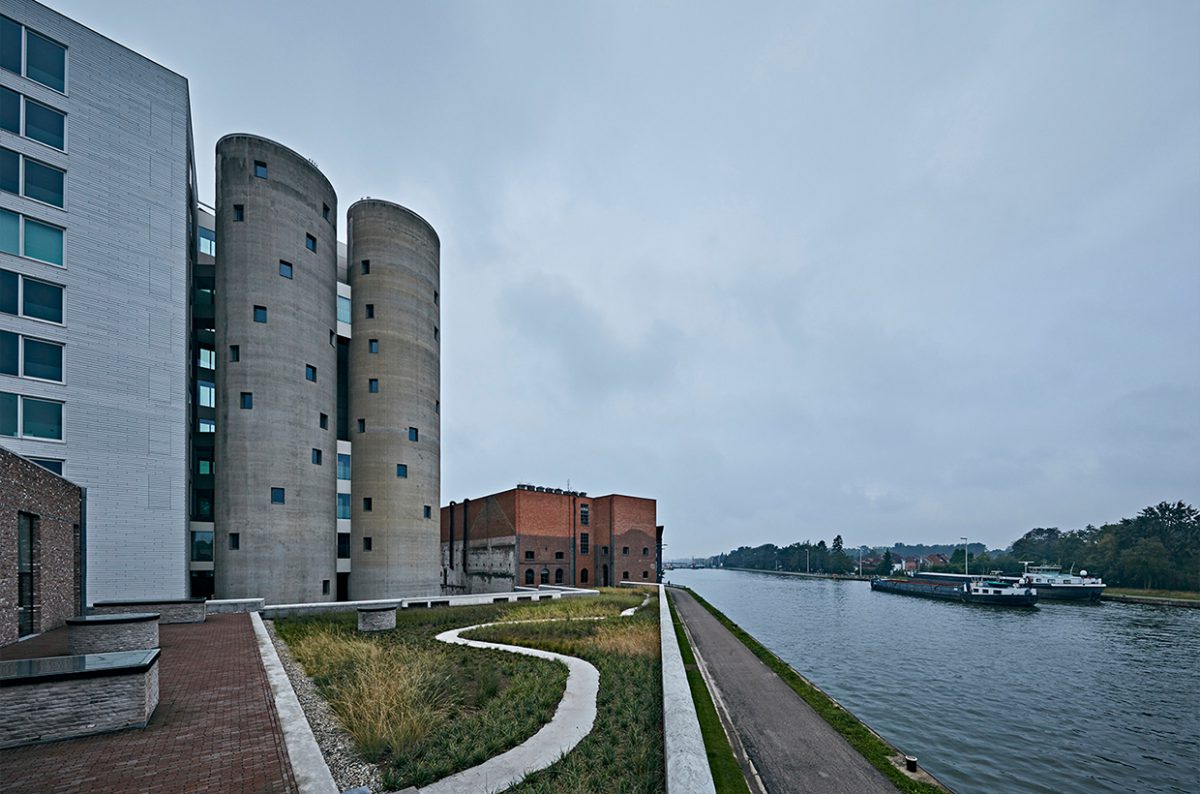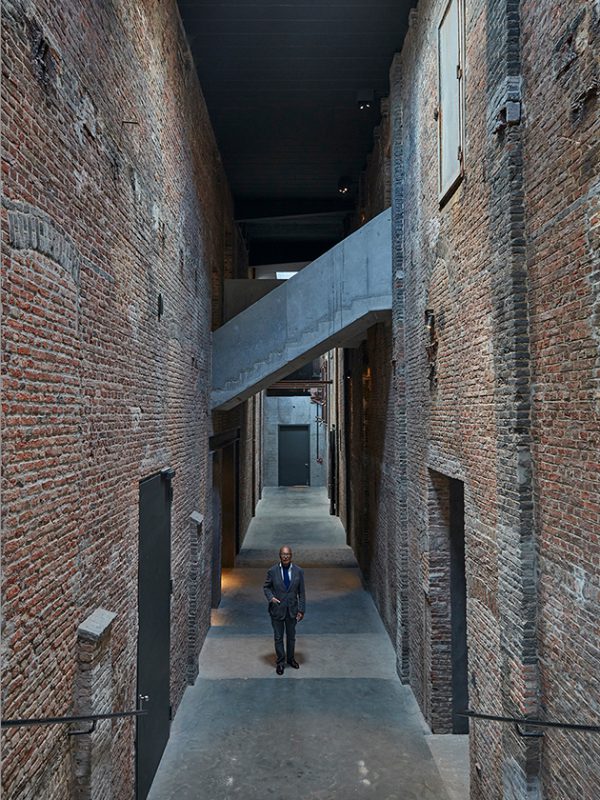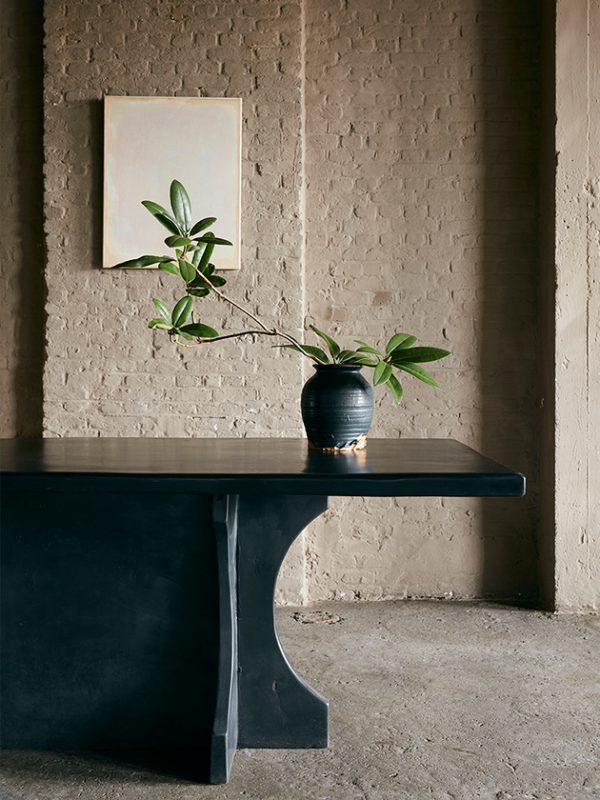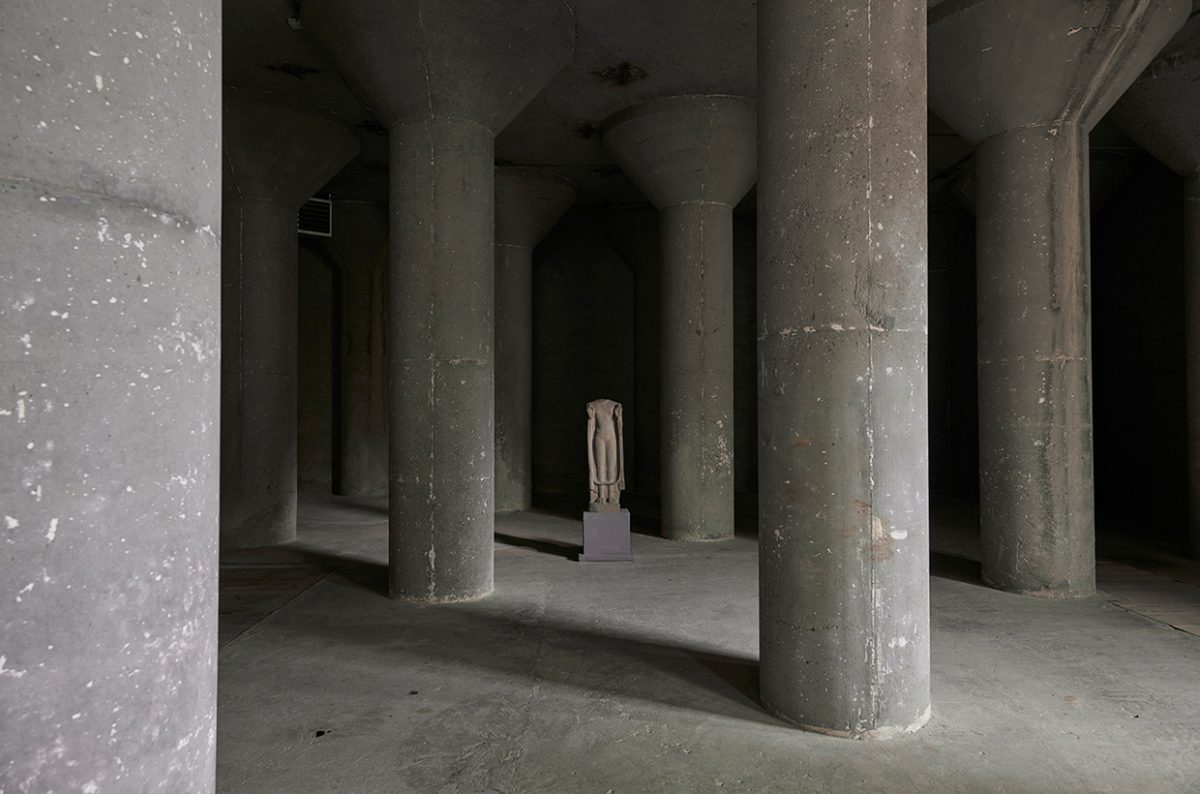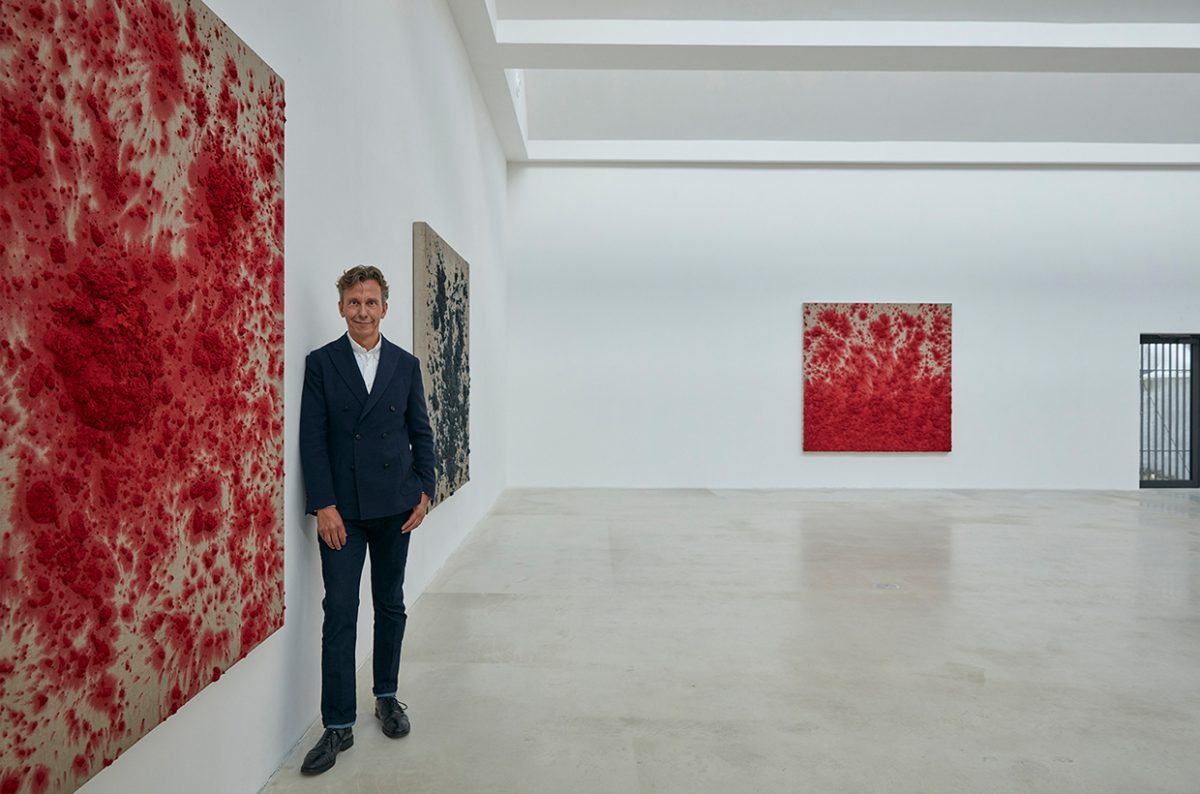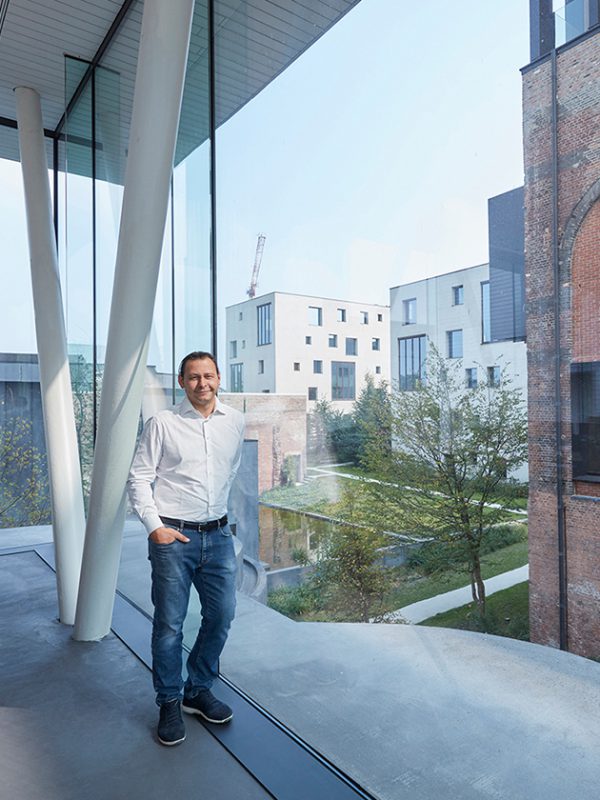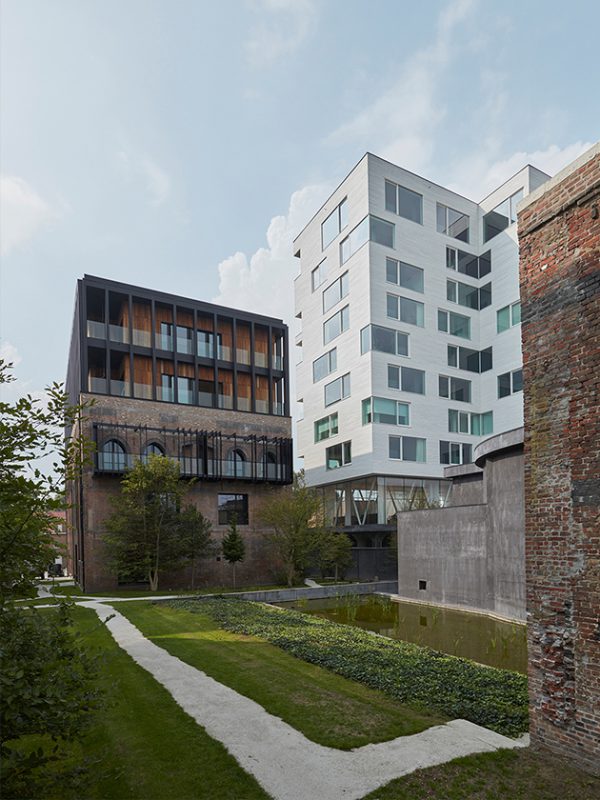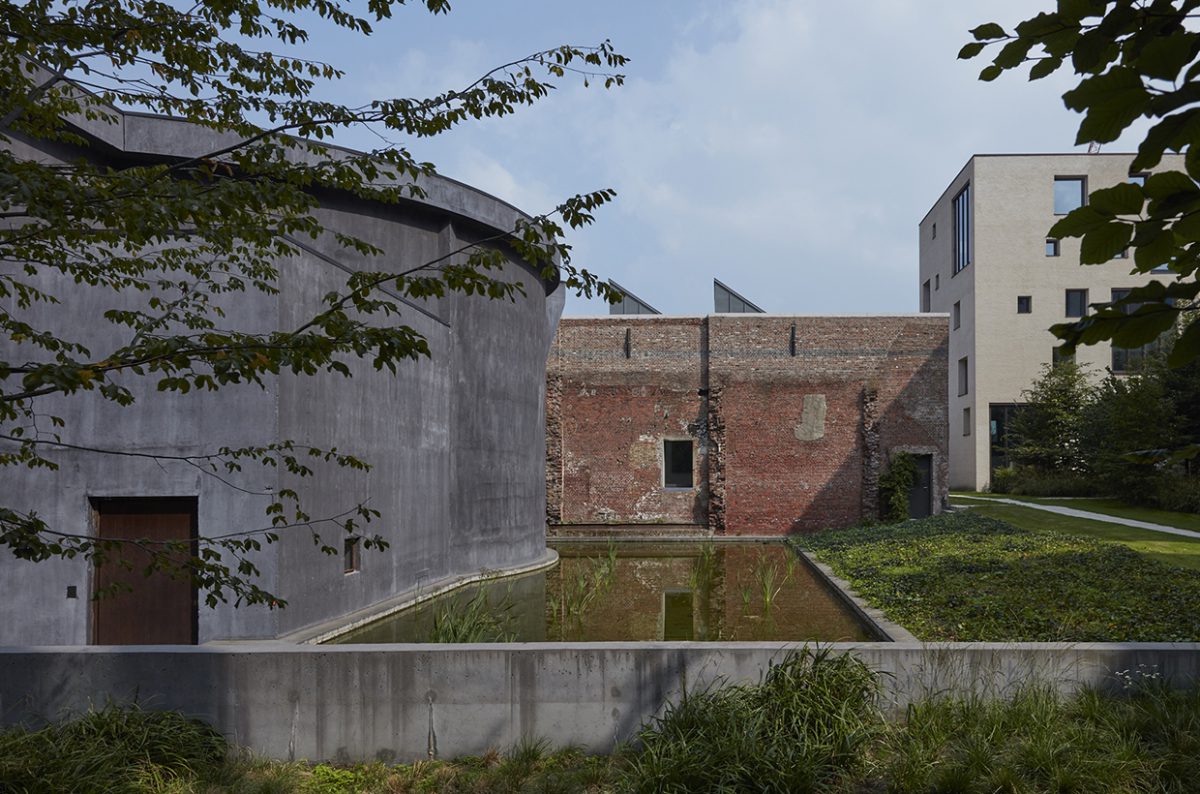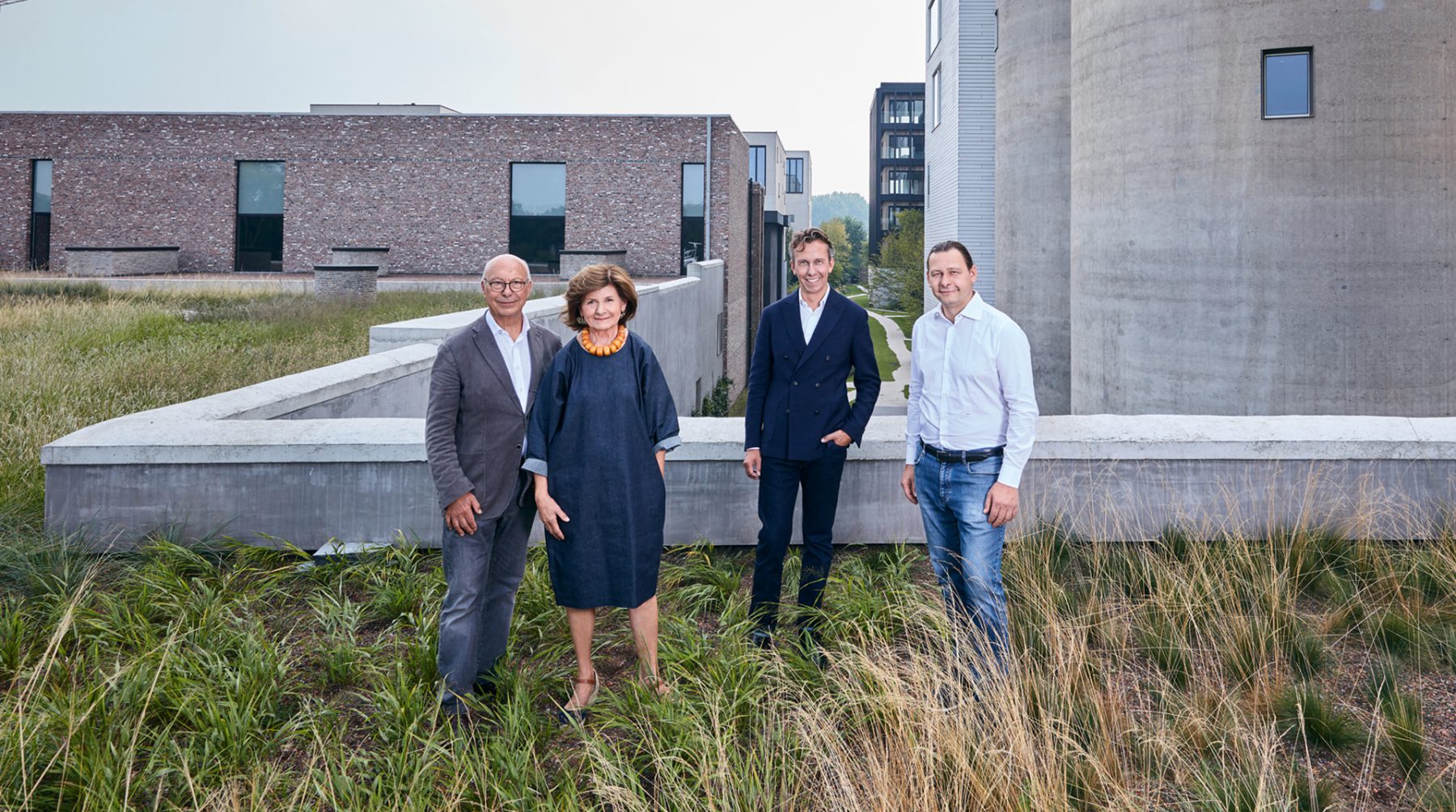The Art of Harmony by Eva Karcher | 23rd November, 2018 | Personalities
With a client list that includes Robert De Niro, Bill Gates, and the Belgian royal family, Axel Vervoordt is celebrated around the world as a visionary interior designer, real estate developer and art dealer. Along with his wife and sons, the Belgian aesthete has created a global company encompassing his three biggest passions. Their most recent project: a sprawling creative district in suburban Antwerp where art and life come together seamlessly.
Pure cosmic power! When Axel Vervoordt talks about Japanese painter Kazuo Shiraga, the pace of his speech quickens and his eyes become a brighter shade of blue. Shiraga’s work “taps into the deepest stages of meditation,” Axel tells us; the colors just explode on the canvas with “the energy of the Big Bang.” We’re here together admiring a particularly magnificent Shiraga painting inside a former malting distillery on the Albert Canal in the Antwerp suburb of Wijnegem, where the 71-year-old Belgian designer has created a monumental, unprecedented live-work-art complex: Kanaal.
It’s only his most recent project: Axel, a multi-talented, internationally acclaimed art dealer and collector, furniture designer and interior architect, real estate developer and life philosopher, is possessed of a creativity that knows no bounds. (Though he hates being referred to as a “decorator,” he won’t object to being called an “artist.”) Within the past five decades, Axel, born in Antwerp in 1947 to a racehorse dealer and an urban renewal enthusiast, has built an internationally successful empire along with his wife, May, and – from the 1990s onward – their sons, Boris and Dick. Axel sums up the uniqueness of his life’s work in just a few words: “If has to feel like it’s always been there. Then it’s real.” His ability to create an atmosphere of exquisite simplicity has made him into a sought-after design guru, with a client roster that includes the Belgian royal family, Kanye West, Sting, Robert De Niro, Calvin Klein, and Bill Gates. According to Vervoordt, all of them – like him – long for substance, “for an authenticity behind the dazzle that surrounds them. They want to feel in harmony.” The way to this sense of balance requires a deep consideration of one’s individual needs.
So how does one accomplish this? “Be open to your intuition!” Axel tells us cheerfully. It’s this openness that’s always drawn him to the unremarkable, the unpretentious, “the beauty of the imperfect, since beauty is as fleeting as life itself,” as he explains. (As a child, he even kept a collection of weathered stones.) His lifelong passion for bygone eras, his awareness of transience, and his love of nature, the aesthetics of patina, and the traces of aging within a culture form the core of his creative work. For De Niro’s penthouse atop the Greenwich Hotel, for example, Axel used stone and reclaimed wood from the actor’s country house garden, treated the walls with a mixture of local earth and plaster, and constructed ceilings from old tabletops. In the living room, he combined his own earth-toned upholstered furniture designs with an antique coffee table made of chestnut wood; in the bathroom, he installed a 17th-century farm trough as a bathtub. “The past is inscribed in the present: I take the essence of the past and merge it with something from the current moment,” explains Axel.
That inspiration came to him early on: As a boy, Axel watched his mother, whom he called “Mani,” buy and renovate old houses in Antwerp. When Axel was 21, Mani gave him the tip for his first property acquisition: “fourteen rather dilapidated houses from the 16th and 17th centuries in the Vlaeykensgang, an alley in the old town behind the cathedral,” Axel explains. “My father lent me the money and I purchased them all on Easter, 1969.” Together with his mother, Axel renovated the townhouses, and eventually, he moved into one of them with his young family. As he began working with antiques and furniture and building up a stable of clients, the natural place to invite them was to his home – and thus it became the first showroom for his dealership. “That was the best way to show them my world,” he explains.
Axel’s art-meets-life business model was highly unusual back in the 1970s, when art was shown exclusively in whitebox galleries. His eclectic approach also distinguished him: From his earliest days as a dealer, Axel was mixing antiques from Western and Eastern traditions, combining pieces from the past and present, styles ranging from Baroque to Minimalism. Examples included a marble head of the Roman messenger of the gods, Hermes, from the first century BCE, Buddha sculptures, furniture by French designers of the 1950s, and paintings by the Belgian abstract artist Jef Verheyen, who later became Axel’s “teacher and closest friend.” Through Verheyen, Axel discovered the German post-war art movement Zero – a group founded by Otto Piene and Heinz Mack that also included Günther Uecker, who later became a friend to Axel as well – and its “concept of emptiness,” as Axel calls it. The artists rejected the art historical precedent, beginning at “zero,” and Axel’s exposure to the movement had a strong impact on his own work.
In 1973, Axel married his wife, May; one year later, their son Boris was born, followed by Dick in 1977. In 1984, Axel made a major business deal that would prove life-changing: at Christie’s Amsterdam, he and a friend purchased over 7,500 pieces of 17th-century blue and white Ming porcelain that had been discovered in a shipwreck. Shortly thereafter, Axel sold the bulk of the matte vases, plates, cups, tureens, and bowls at a massive profit. Axel used this money to purchase a medieval castle, the Kasteel van ’s-Gravenwezel, (and some of the filigree pottery treasures – including several cups, which he and May bring out when having guests over for tea – can still be found in the china room there). Only 20 minutes by car from the city center, the castle and its magnificent 70-hectare grounds were in need of dire repair when Axel acquired it, and he gradually renovated it until it became the family’s primary residence.
These renovations, and the tremendous vision and executive skill behind them, would all pave the way for the Kanaal project. In 1999, after Dick and Boris had both joined the company, Axel bought a sprawling, late 19th-century factory complex – larger than three football fields – that had been abandoned for over 150 years, and began constructing a cultural-residential complex uniting architecture with art and nature, work and leisure.
“We preserved the heritage of the historical structures and then refined and recontextualized them by making contemporary additions,” explains Boris as we make our way through the grounds. “We’ve done what we always do: discover so that others can rediscover.” For the Kanaal project, the Vervoordts enlisted the help of Brussels-based Japanese architect Tatsuro Miki, a family friend whom they’d worked with before. The project took 12 years to complete and cost approximately €100 million.
The investment appears to be paying off: Nearly all of the 98 apartments have already been sold. But Kanaal’s exterior – narrow paths crisscrossing through a manicured landscape of flowerbeds and saplings, connecting the many disparate structures along the barge-lined canal – is nothing short of stunning. There’s a cluster of tall cylindrical concrete grain silos, some of which have been converted into residential units; farther along are the steel-and-brick factory buildings, which house yet more apartments and lofts, as well as workspaces and a dining facility for the 100-plus buyers and sellers, product designers, interior architects, restoration experts, and artisans who work at Kanaal’s headquarters. There’s also a restaurant, an organic supermarket, and a bakery for local residents – all part of an urban oasis that leaves nothing to be desired. But the audaciousness of the Vervoordts’ project isn’t truly revealed until one goes inside. Axel wanted to preserve the buildings’ cast-iron industrial interiors – with their steel beams and steep staircases – while also incorporating halls for temporary exhibitions and spacious showrooms for private clients. The result reflects his highly developed eclecticism, which he sums up thusly: “I love the tension that’s created through the juxtaposition of different objects and cultures.” This passion is exemplified in Axel’s “sanctuary”: a monumental pillared hall comprising 23 massive concrete columns with conical capitals, a dim and mysterious space that also contains several 7th- and 8th-century sculptures of Buddha’s torso – works from the Thai Mon-Dvaravati culture, Indian Buddhists who sought refuge in the north of Thailand. Indeed, such a space is where Axel is most at home: “This is my Karnak,” he says, referencing the Egyptian village that is home the country’s largest temple.
One of the biggest challenges for Axel was designing a space for his art collection of works inspired by wabi-sabi, a Japanese aesthetic worldview that involves “returning to the essence of objects and nature,” as he puts it. In 2008, Axel and May created a foundation for the collection, whose many treasures include a light sculpture by Otto Piene, paintings by Lucio Fontana and Antoni Tàpies, and a healing stone by Marina Abramovic. The collection can be found just off a narrow corridor deep within the silo complex, behind a set of heavy doors, in a series of dim and intimate rooms. Admiring the works – many of which, including a 12th or 13th-century lacquered wood Lohan Buddha, are illuminated like relics – is tantamount to embarking on a spiritual journey across cultures and time periods. With each new object, the creative principle of abundance in emptiness and ageless aging – values that inform and inspire how Axel thinks, feels, and conducts business – comes together more clearly.
Axel discovered “the embodiment of emptiness” in the work of the British sculptor Anish Kapoor, whose breathtaking five-meter-high, eight-meter-diameter dome sculpture At the Edge of the World was installed in the Kanaal complex’s former malt kiln, a semicircular building, back in the year 2000. Standing under the vaulted cupola, the inside of which is painted a deep shade of red, one can feel space and time, the boundary between the internal and the external, and the ego itself slowly start to dissolve into infinity. The meditative quality reflects Axel’s own experience with the practice: He’s been meditating three times a week for many years, he says.
At lunch we meet Axel’s wife, May, who introduces herself as the “company mother,” advising clients and taking care of the details “that make a house a home” – fabrics, candles, flowers, porcelain, table decorations, dining culture. We also learn more about the family: Dick and his wife Marleen, who handle property development, live in a converted farmhouse with their children on the Kasteel van ’s-Gravenwezel grounds, while Boris, who manages the gallery and antiques business as well as the Axel Vervoordt Home Collection, lives with his husband, writer Michael Gardner, in one of the original Vlaeykensgang houses. Though the family members play distinct roles within the business, they are all in sync when it comes to the larger goals and values. “One time, we were sitting together, just as we are now,” recalls May, “and we asked ourselves: ‘What exactly is the identity of our company?’ And we all wrote down our own answers privately. But when we showed each other the notes, everyone had written the exact same thing: ‘Creating harmony.’” Which is only possible if everyone gets along – right? “We are a happy family,” says Axel. “Not because we were born happy, but because again and again, we always choose happiness.”
